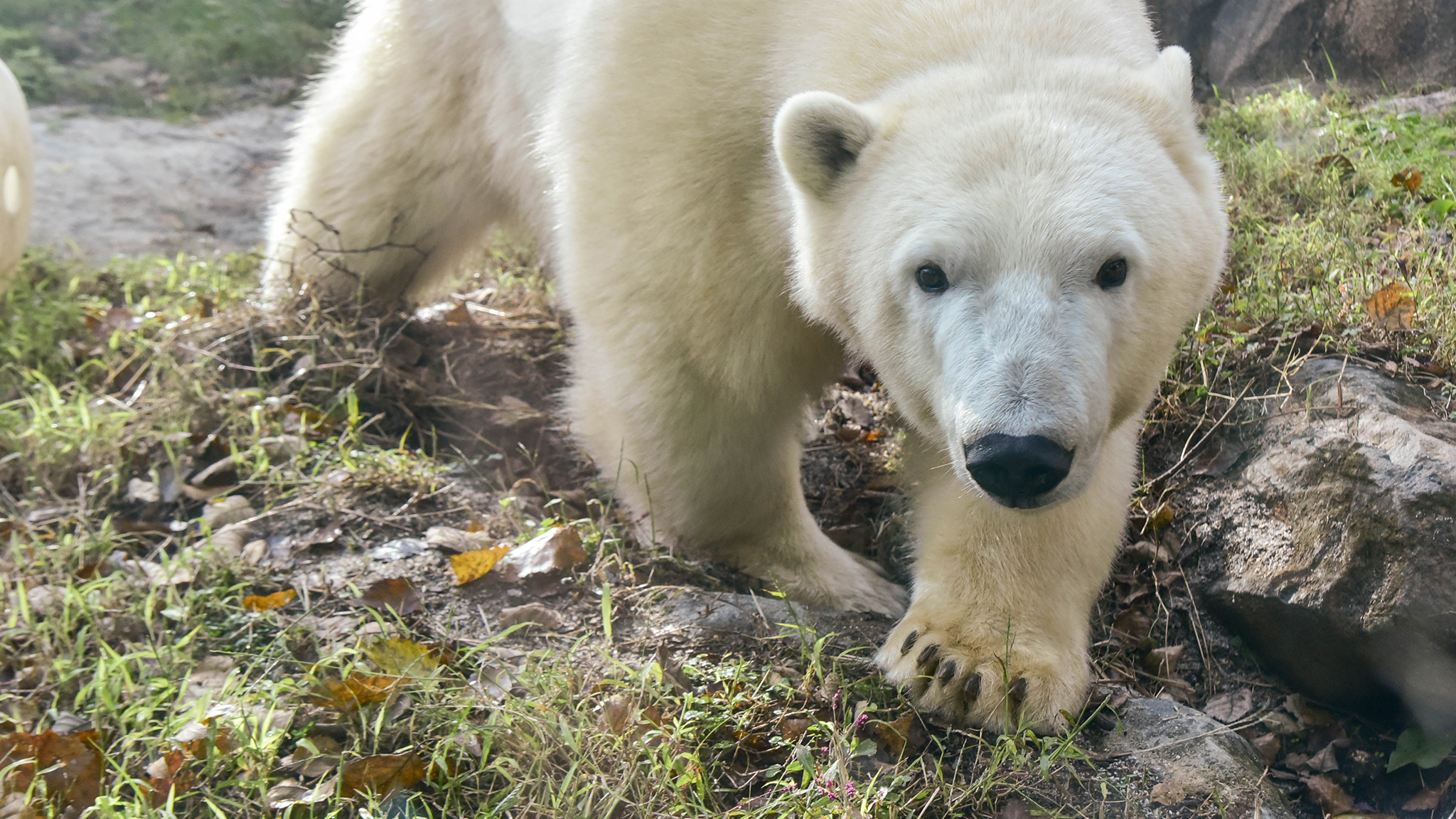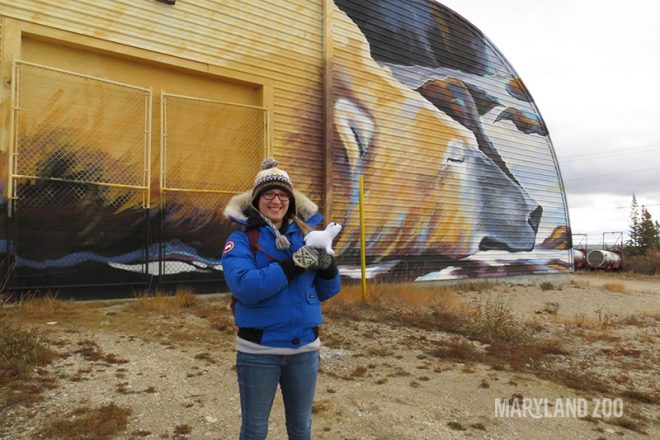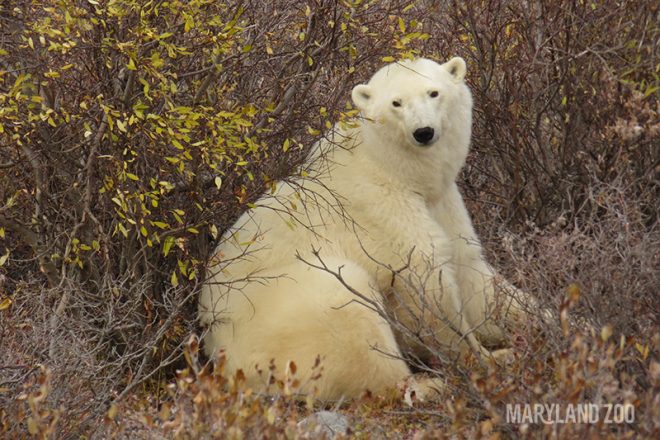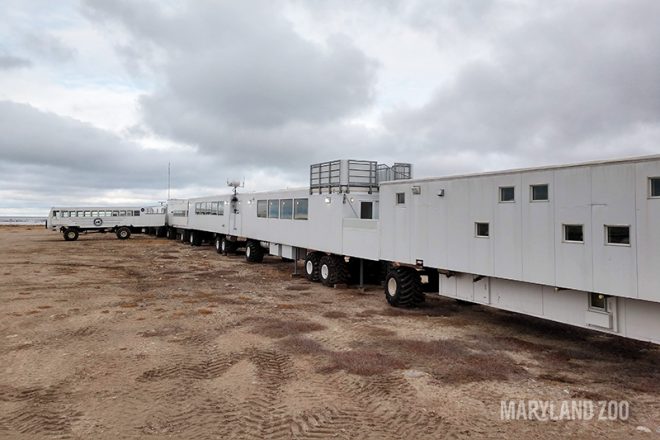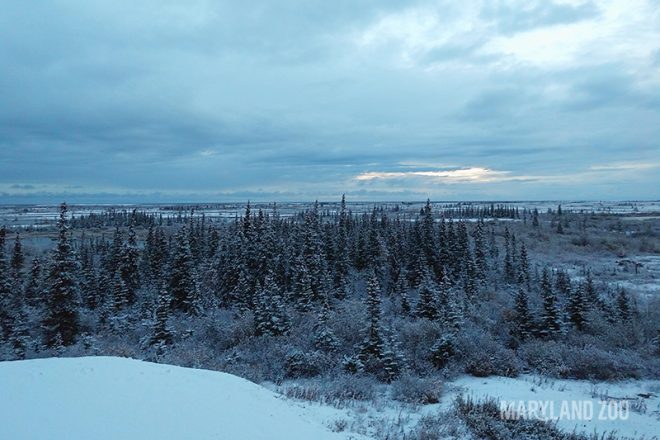Working to Protect Arctic Ecosystems and the Species that Depend on Them
The choices we make and the actions we take right here in Maryland can have effects on species and ecosystems thousands of miles away. That means we can inadvertently cause harm to species like polar bears. But it also means we can choose to make a difference in positive ways.
Climate Change, Sea Ice, and Us
When we burn fossil fuels–such as coal, oil, and natural gas–to produce electricity and to power our vehicles, we release an excess of carbon dioxide (CO2) into the atmosphere. CO2 acts like a blanket, trapping heat energy in Earth’s atmosphere. The more CO2 we add through our daily activities, the thicker that blanket becomes, and the more heat that becomes trapped in our atmosphere. We are feeling the effects of increasing global temperatures and climate disruptions. But the trapped heat energy is not spread evenly around the world. Areas such as the poles are experiencing more rapid warming—and rapid loss of the sea ice.
Sea ice is critically important to polar bears because it acts as a platform for them to stalk and catch the high-fat prey–seals–that their bodies require. But with climate change, sea ice is diminishing, melting earlier in the summer and freezing up later in the winter. During times of the year when extensive sea ice is unavailable, polar bears are unable to eat because they lack a hunting platform. As ice-free days become more and more common in the Arctic, polar bears must go for longer and longer periods of time without a chance to hunt, making starvation a very real threat.
Although the effects of climate change are the most rapid and extreme in the Arctic, climate change affects ecosystems throughout the world, including right here in Maryland. Here, climate change is leading to increasingly severe storms, rising sea levels, and even higher incidences of disease from the large number of ticks that survive our increasingly warmer winters.
Together We Can Make a Difference
No one person can solve the problems of climate change alone. But working together, we can make changes that reduce one of the main causes of climate change: burning fossil fuels. Here is a list of ways you can be part of the larger community working to address climate change:
- Speak Up! Sign a petition.
- Support an Energy Shift: Get involved in community projects that reduce or replace fossil fuels with clean energy sources like solar and wind. Learn about renewable energy options available to you.
- Vote! The most important action you can take is to vote with the climate in mind in every election. And let your representatives know you support bold climate action. Find out who your representative is!
- Promote Clean Transportation: Support community projects aimed at reducing the number of vehicles overall, such as car sharing and mass transit programs. And where possible, walk or take a bike for shorter trips or to get to work. Not only is it a good way to reduce fossil fuel use, it is a great way to get exercise and enjoy nature and your community.
- Build for a Better Future: Support energy-efficient construction standards, and make energy-efficient choices for your home, including heating and cooling, insulation, and lighting.
Arctic Ambassador Center
The Maryland Zoo partners with Polar Bears International as an Arctic Ambassador Center. Polar Bears International (PBI), the leading polar bear conservation organization, is dedicated to saving polar bears by protecting their sea ice habitat. Through its Arctic Ambassador Center (AAC) program, PBI collaborates with a number of zoos and related facilities with the ultimate goal of securing a future for polar bears across the Arctic. Although the Maryland Zoo does not currently house polar bears, we remain committed as an AAC to the conservation of this species through education, research, and ongoing collaboration with PBI. The Zoo supports the work of PBI through funding, education programs, and staff expertise and involvement. The Zoo also helps advance scientific understanding of polar bears through its participation in research studies that help improve care of polar bears in zoos and that can be used to better understand and protect polar bears in their native range.
Notes from the Field
Over the years, multiple Zoo staff members have traveled to Churchill, Manitoba, in Canada to experience the tundra ecosystem with other zoo and aquarium colleagues and to study best practices in climate change communication. Upon their return from Churchill, these staff become members of the Zoo’s Arctic Ambassador Center Team, which serves as a resource for the Zoo in communicating effectively about climate change and in providing leadership for initiatives related to climate change mitigation.
- 2022 – Erin Grimm
- 2019 – Sharon Bowen
- 2018 – Emilee Orndorff
- 2009 – Tanya White
- 2005 – Becky Lynagh
